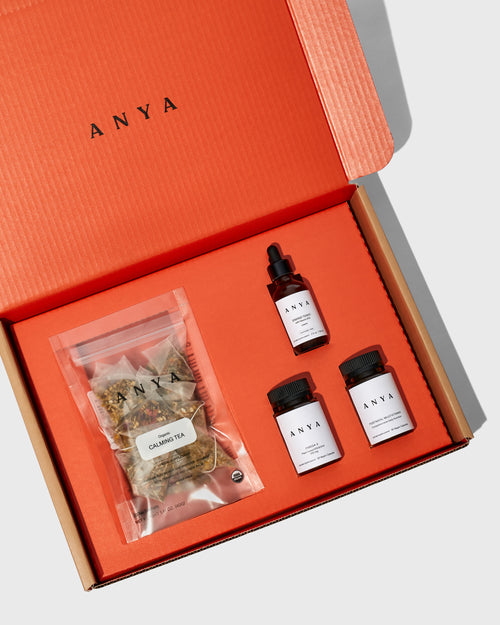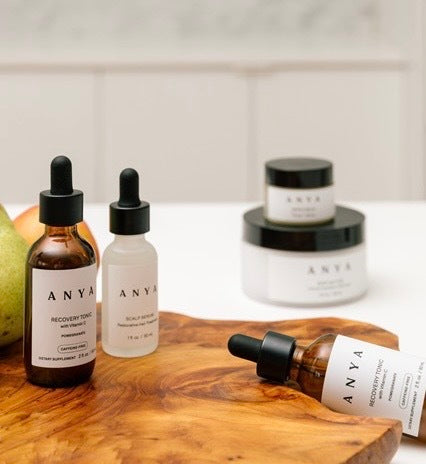By they time they’re 6 months old, 75 percent of babies in the United States are receiving at least some formula. But what exactly is formula, and which one is right for you and your family? We dug into the details of formulas so you don’t have to.
But first a good-news PSA: If you’re panicking about formulas, don’t. They are more similar than they are different, and you can’t really make a wrong choice—all these formulas will meet your baby’s nutritional needs. And if you don’t like one for whatever reason, switch to another one (many parents do!). Baby formula is a manufactured food modeled after breast milk and designed to support a baby’s growth and development. Like breast milk, formula is composed primarily of carbohydrates plus fats, proteins, vitamins, and minerals.
Obviously, there are many considerations that go into choosing the right formula for your baby. A good starting point is to think about what your top priorities are: carbohydrate source, added sugars, prep work, cost, intolerances/allergies, and sustainability.
Carbohydrates
One consideration when choosing an infant formula: The source of carbohydrates. The primary carbohydrate source in breast milk is lactose. To mimic the composition of breast milk, many infant formulas use lactose derived from cow’s milk. But depending on the type of formula you give your baby, there may be additional sugars, like corn syrup and sucrose, used to maintain the carbohydrate levels needed for the baby to grow. (The universal standard is that formulas provide 40 percent of their calories from carbohydrates.) Because formula has different labeling requirements than other FDA-regulated foods, you will not see “sugars” broken out on the nutrition facts label since they fall under the “carbohydrates” percentages.
Prep Work
Another consideration: Formula often requires the added step of measuring and mixing before you can feed it to your baby. While the degree of prep work varies, baby formula is one of the most highly regulated food products in the United States. “Parents should know that every infant formula sold in the US has met FDA requirements for nutrients,” says Tamzen Mckenzie, a pediatric emergency room nurse in Boston.
Price
When calculating the cost of formula, keep in mind that formula-fed infants will drink, on average, 25 to 30 ounces a day for most of their first year. (It decreases once they start eating solid foods.) There are over 50 different baby formulas available in the United States, and finding one that works for you, your baby, and your budget can be overwhelming. (When looking at the price per ounce, consider whether or not it has to be mixed with water.)
When creating a guide to the best baby formulas, we chose only formulas high in DHA and ARA (thought to promote healthy brain development), focused on formulas that use lactose as the primary carbohydrate source (unless otherwise noted), and meet the requirements of the FDA (many European formulas do not).
Our Favorite Organic Infant Formula: Bobbie
Price: $1.99 per ounce
Carbohydrate Source: Organic Lactose
Added Sweeteners: No
Pros: Bobbie is first European-style formula sold commercially in the United States that meets FDA requirements as well as EU nutritional standards. The brand describes its recipe as “European-style,” meaning it uses organic nonfat milk from pasture-raised cows (Organic Valley is their provider), and it contains more DHA (sourced from algae) than most other formulas on the market. Bobbie also offers a subscription service, which means you will never run out.
Cons: There is currently only one Bobbie recipe, and it contains soy and lactose, so it’s not suitable for babies who are sensitive or intolerant to either. It is also slightly lower in iron than comparable brands but still falls within FDA guidelines. At $1.99 per ounce, Bobbie is quite a bit more expensive than some other formulas.
Bottom Line: A great choice if it’s important to you that the milk comes from organic, pasture-raised cows. But it is on the pricey side.
Our Favorite Powder Formula: Kirkland Signature ProCare (Costco)
Price: $.48 per ounce
Carbohydrate Source: Lactose
Added Sweeteners: No
Pros: Kirkland has no artificial growth hormones and no genetically engineered ingredients. The tub, though plastic, is very user friendly with a scoop leveler and holder.
Cons: The dairy in the formula is not organic and comes from various markets, including the United States, Canada, and New Zealand. You’ll need to carefully measure out the powder and water for each serving to make sure your baby is getting the right concentration of nutrients.
Bottom Line: The ingredient list is similar to some other nonorganic formulas, but it costs less at $.48 per ounce. (You don’t have to be a Costco member to buy it.)
Our Favorite Ready-to-Feed Formula: Similac Advance
Price: $.24 per ounce
Carbohydrate Source: Lactose
Added Sweeteners: Galactooligosaccharides (a plant sugar prebiotic)
Pros: Extremely convenient because it doesn’t need to be measured or mixed with water. (That means you don’t have to worry about the type of water you use—tap, boiled, or bottled). It’s available in 32-ounce bottles that are ready to pour into a baby bottle.
Cons: Ready-to-feed formula is, on average, about twice as expensive as powder and produces more waste.
Bottom Line: This is convenient, but consider using it judiciously if you are concerned with sustainability. (The bottles are not reusable, and though the bottles are recyclable, most recyclable plastic ends up in landfills.)
Our Favorite Liquid Formula: Enfamil Premium Concentrated Liquid Formula for Infants
Price: $.38 per ounce
Carbohydrate Source: Lactose
Added Sweeteners: Galactooligosaccharides and polydextrose (less than 2 percent)
Pros: The liquid formula is easier to measure than powder formula because you’re mixing equal parts liquid and water. You can make a large batch and store it in the refrigerator for up to 48 hours. And like breast milk, the primary carbohydrate is lactose.
Cons: The concentrated liquid formula is more expensive than powder, and it contains palm oil, which some people try to avoid as it is a major contributor to deforestation.
Bottom Line: More costly than powered formulas, but it may be worth it to you for the convenience factor.
Our Favorite Gentle Formula: Parent’s Choice Tender Infant Formula (Walmart)
Price: $.62 per ounce
Carbohydrate Source: Lactose
Added Sweeteners: Maltodextrin, galactooligosaccharides
Pros: Parent’s Choice is the Walmart generic brand and less expensive than many name brands. This formula contains only milk proteins that have been broken down (partially hydrolyzed) to make them closer in size to human breast milk proteins, which may make it easier for the baby to digest. It’s also worth noting that the milk protein is 100 percent whey, which is also easier to digest than casein.
Cons: This formula uses palm oil (in addition to soy oil and coconut oil) as the primary source of fat, which some research has shown may reduce calcium absorption when combined with soy oil. It also contains an additional sweetener (maltodextrin), which is true of all partially hydrolyzed formulas in the United States.
Bottom Line: If your baby has digestive issues and/or the pediatrician recommends a gentle formula, you may need a partially hydrolyzed formula. This is a good option because it doesn’t have intact (larger) proteins, which can be harder to digest.
Our Favorite Prebiotic Formula: Similac Pro-Advance
Price: $0.31 per ounce
Carbohydrate Source: Lactose
Added Sweeteners: Fructooligosaccharides (less than 2 percent)
Pros: Contains 2'-FL human milk oligosaccharide (HMO), a prebiotic typically found in breast milk. HMOs are the third most abundant solid component of human milk after carbohydrates and fats; they feed good bacteria in the gut, which benefits and supports the baby’s developing immune system. Although it’s not organic, it contains no artificial growth hormones.
Cons: It’s on the pricier side.
Bottom Line: Before Abbott, the maker of Similac, developed this formula, HMO was an ingredient only available to breastfed babies. A study copublished in the Journal of Nutrition showed that babies fed Abbott’s 2'-FL HMO formula had immune system markers nearly identical to breastfed babies.
Best Soy Formula: Earth’s Best Non-GMO Plant Based Infant Formula
Price: $1.52 per ounce
Carbohydrate Source: Organic Corn Syrup Solids
Added Sweeteners: No
Pros: Soy-protein-based formulas are typically marketed as being for babies who are unable to tolerate lactose. (They are also preferred by parents who follow a vegan diet.) The protein in these formulas is a soy isolate, and the fat is derived from vegetable oils.
Cons: Like all soy formulas, this relies on a carbohydrate source that is not from cow’s milk—n this case, it’s organic corn syrup solids. Corn syrup is high on the glycemic index. But compared to some other soy formulas, it has less added sugar.
Bottom Line: Soy-based formulas meet the same FDA requirements for all infant formulas and provide nutrition for healthy growth and development.
Our Favorite Gadget: Baby Brezza Formula Pro Advanced Baby Formula Dispenser
Pros: This countertop device is easier than making coffee—it mixes powder formula with warm water, and it turns out a baby-ready bottle at the press of a button.
Cons: If the machine is not cleaned properly, it does not dispense the correct ratio of formula to water, so you have to be diligent about cleaning it regularly.
Bottom Line: If measuring out a scoop and warming a bottle at 3 a.m. is your idea of torture, this might be your solution.
European Infant Formulas
It’s a term that is often thrown around in the world of bottle feeding, but what exactly is European-style formula? European brands like HiPP, Holle, and Töpfer are especially appealing to parents looking for organic formulas, formulas derived from grass-fed cows, formulas derived from alternative milk sources (like goat’s milk), or formulas with fewer additives.
While it’s important to note that European formulas are not FDA regulated, a 2019 study published in the Journal of Pediatric Gastroenterology and Nutrition found that many do meet federal nutritional requirements in the United States.
The researchers’ safety concern was the formulas’ composition as well as how the formulas are brought into the country: Since they are not registered with the FDA, it is technically illegal to import them, so there is no regulation for things like temperature control during shipping. Any European infant formulas sold in the United States are through third-party vendors. In March 2021, Holle introduced U.S. Holle products to Whole Foods markets, including the toddler formulas (for ages 1 and up), but to date there is no infant formula available.
Dr. Kelsey Kossl is an adviser to Anya.






